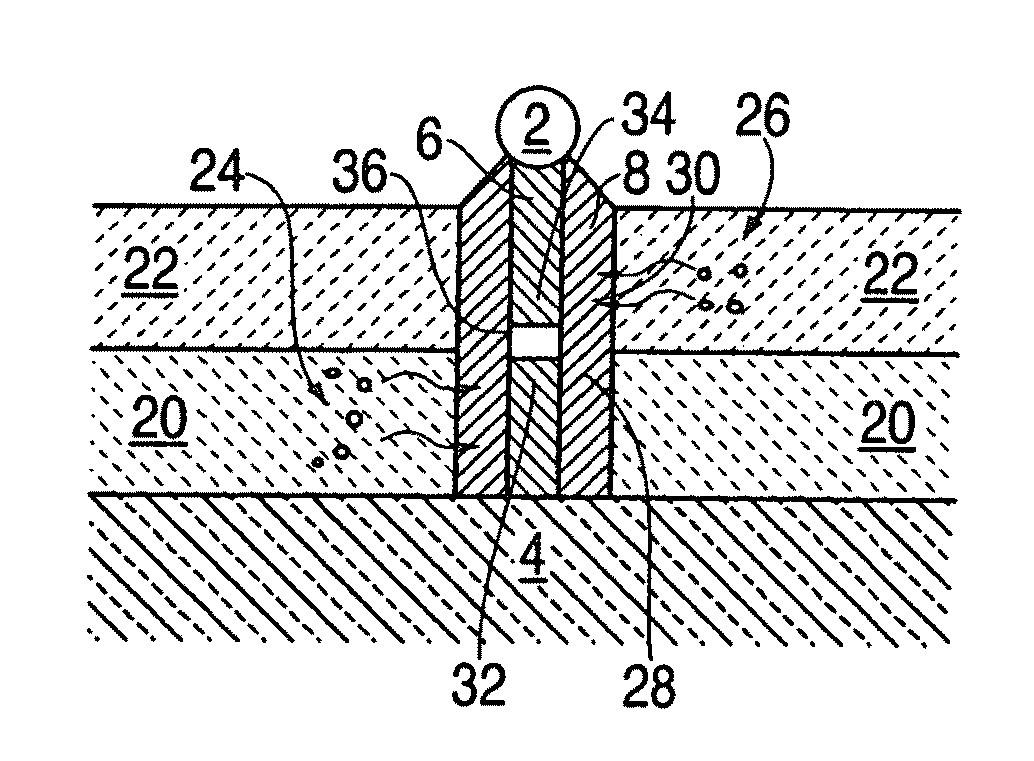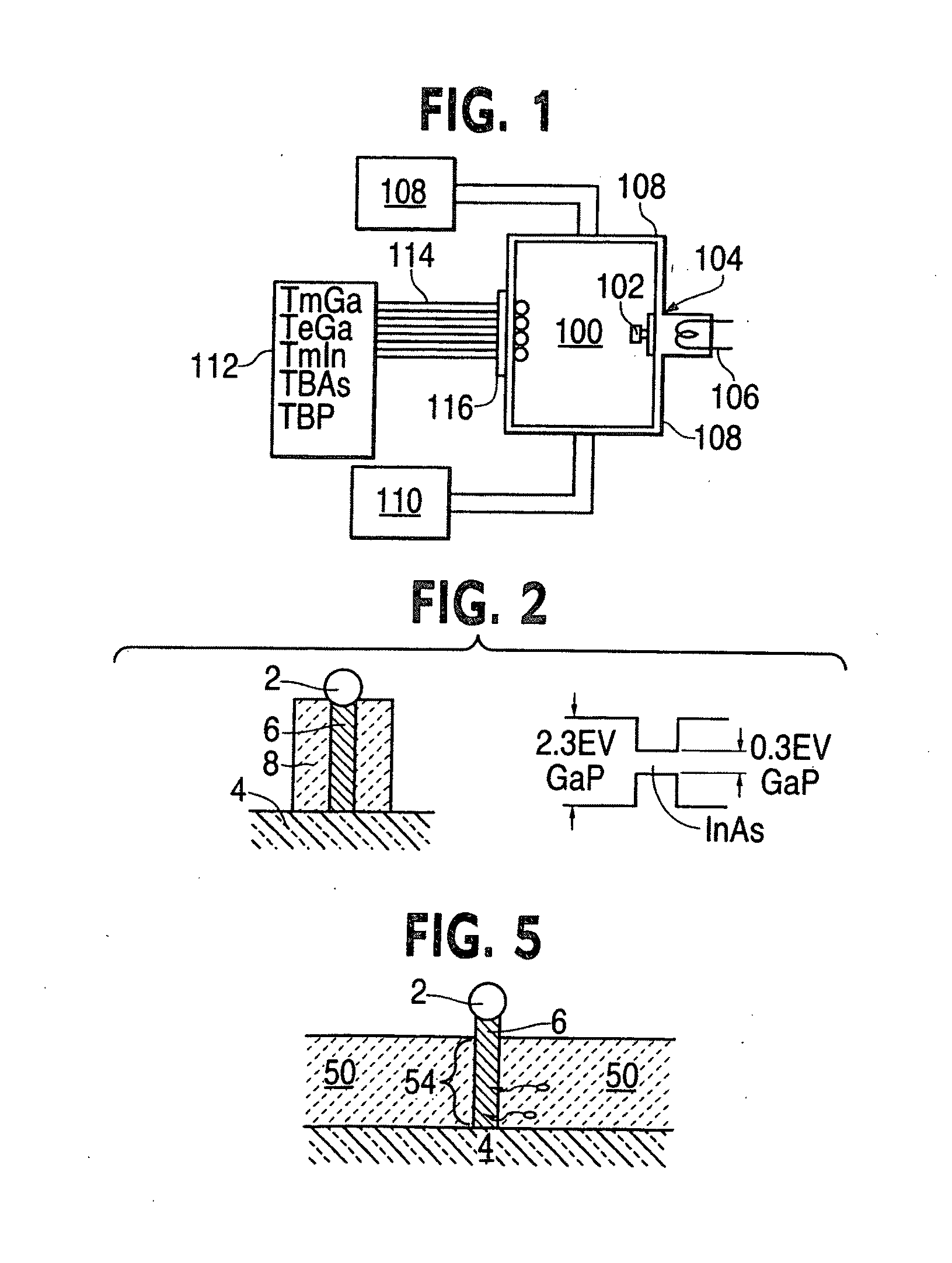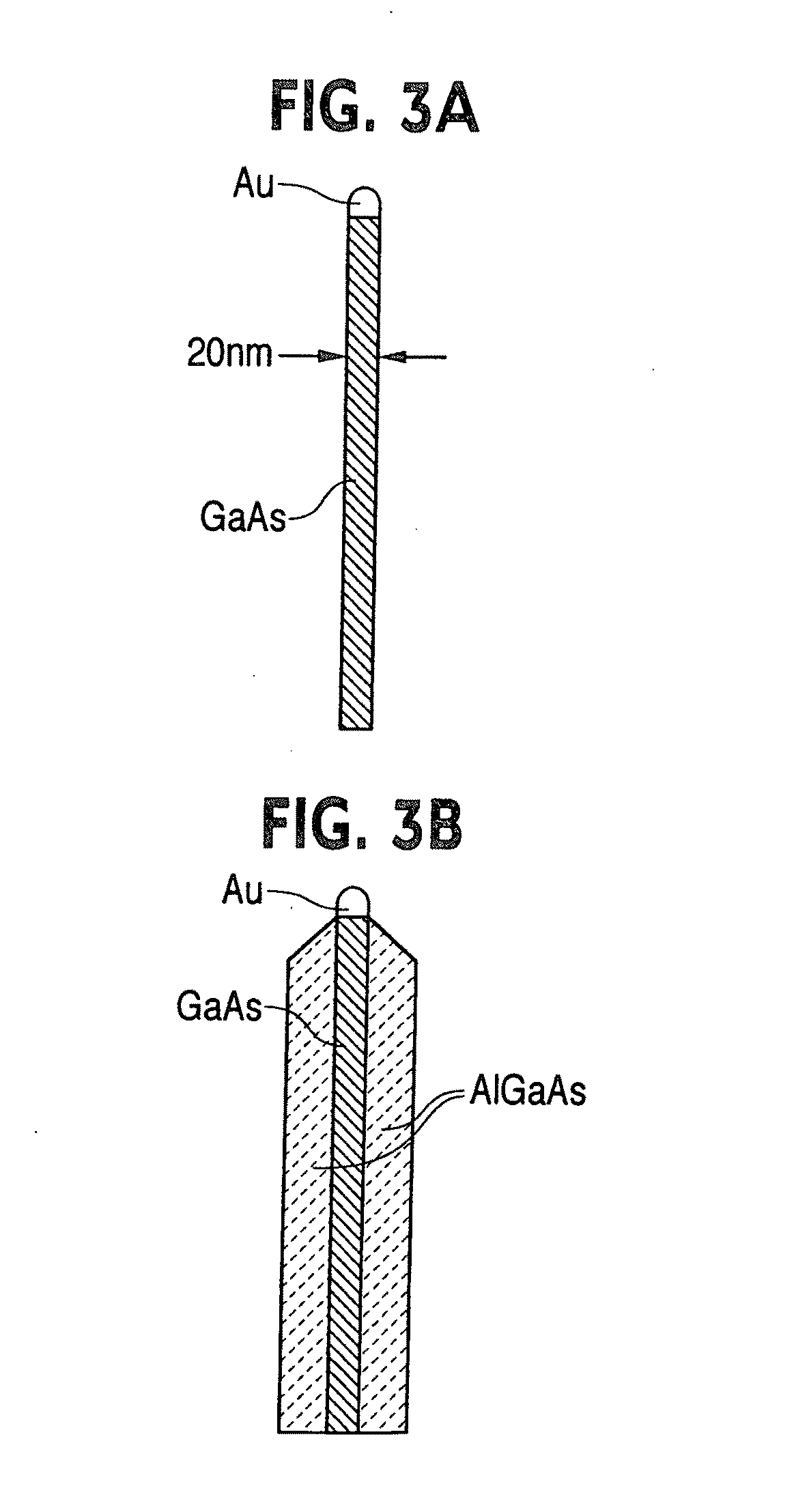Nanowhiskers with PN junctions, doped nanowhiskers, and methods for preparing them
a nanowhisker and junction technology, applied in the direction of nanoinformatics, crystal growth process, polycrystalline material growth, etc., can solve the problems of reducing the mobility of carriers, reducing the junction quality of nanowires, and affecting the conductivity of carriers, so as to improve the conductivity characteristics
- Summary
- Abstract
- Description
- Claims
- Application Information
AI Technical Summary
Benefits of technology
Problems solved by technology
Method used
Image
Examples
first embodiment
[0074]Referring now to FIG. 2, the invention is formed by positioning a gold aerosol particle 2 on a III-V substrate 4, e.g., a gallium arsenide substrate. With appropriate conditions of temperature and pressure a nanowhisker of indium arsenide is grown by injecting organic materials TMIn and TBAs in a conventional VLS procedure, e.g., in a chemical beam epitaxial method, using the apparatus described above, or by a metal organic vapor phase epitaxy (MOVPE), or the like. Indium and arsenide ions are absorbed in the gold particle 2 and supersaturation conditions create a solid pillar 6 of indium arsenide.
[0075]Once the indium arsenide whisker has been grown, different materials TEGa and TBP are used to create a coaxial jacket or surrounding layer 8 of GaP around the nanowhisker 6. Layer 8 may be created by CBE; using the apparatus of FIG. 1, wherein the conditions of temperature (106) and / or pressure (112) are changed to inhibit growth by the VLS mechanism, and instead to support bul...
second embodiment
[0087]Referring now to FIG. 4 there is shown the invention. Similar parts to those of FIG. 2 are identified by the same reference numeral. A structure is produced comprising an inner nanowhisker of GaAs material 6, produced from a catalytic particle 2. The whisker is surrounded by a coaxial jacket 8 of AlGaAs. Then, first and second layers 20, 22 are provided, being of polymer or glass material spun on to the surface of substrate 4. Layer 20 contains n type dopant ions 24, and layer 22 contains p type dopant ions 26. A rapid thermal annealing step ensures that dopant ions 24, 26 migrate into corresponding regions 28, 30 of coaxial jackets 8. The annealing step is controlled such that there is no appreciable diffusion into the nanowhisker 6.
[0088]The result is that the dopant ions within regions 28, 30 create corresponding regions 32, 34 within nanowhisker 6 by modulation doping of opposite conductivity type. These regions that are stable space charge regions create a region 36 deple...
third embodiment
[0090]Referring now to FIG. 5, there is shown the invention, wherein similar parts to those of FIG. 2 are denoted by the same reference numeral. Thus an indium arsenide nanowhisker 6 is grown on a gallium arsenide substrate 4 by chemical beam epitaxy employing a gold catalytic particle 2.
[0091]After formation of the nanowhisker, a first layer 50 of polymer material is evaporated (preferred) or spun onto the substrate 4. There is commercially available a wide range of dielectric materials formed of carbon or silicon based polymers, some of which are doped and have defined electrical conductivity characteristics. The polymer material has contained within it a desired concentration of dopant ions of a desired type. As may be seen, layer 50 extends towards the top of the nanowhisker. The depth of layer 50 can be determined very accurately with evaporation of polymer.
[0092]The entire structure is then subject to rapid thermal annealing. This permits the dopant ions in the polymer materia...
PUM
| Property | Measurement | Unit |
|---|---|---|
| dimensions | aaaaa | aaaaa |
| dimensions | aaaaa | aaaaa |
| dimensions | aaaaa | aaaaa |
Abstract
Description
Claims
Application Information
 Login to View More
Login to View More - R&D
- Intellectual Property
- Life Sciences
- Materials
- Tech Scout
- Unparalleled Data Quality
- Higher Quality Content
- 60% Fewer Hallucinations
Browse by: Latest US Patents, China's latest patents, Technical Efficacy Thesaurus, Application Domain, Technology Topic, Popular Technical Reports.
© 2025 PatSnap. All rights reserved.Legal|Privacy policy|Modern Slavery Act Transparency Statement|Sitemap|About US| Contact US: help@patsnap.com



